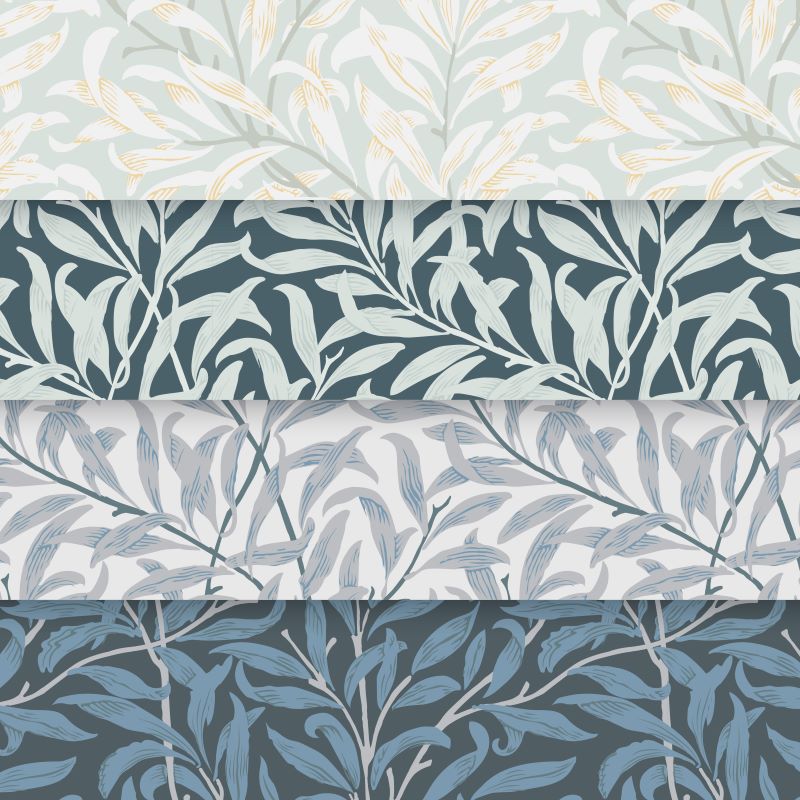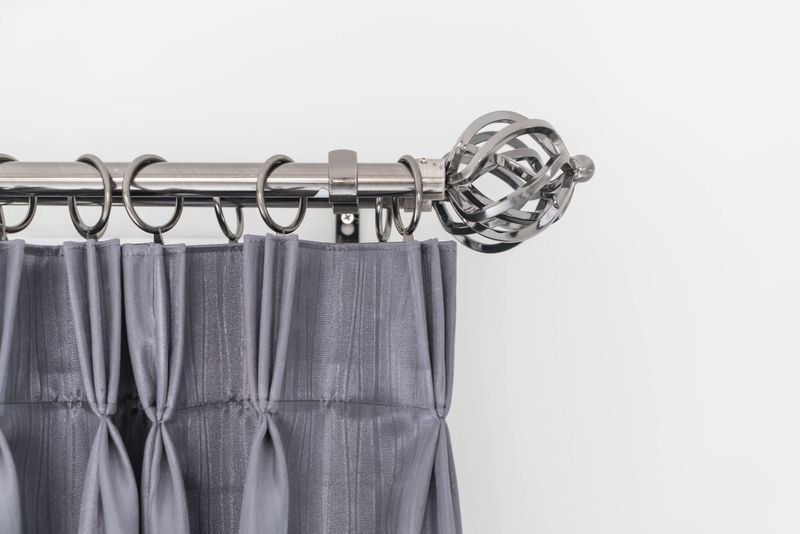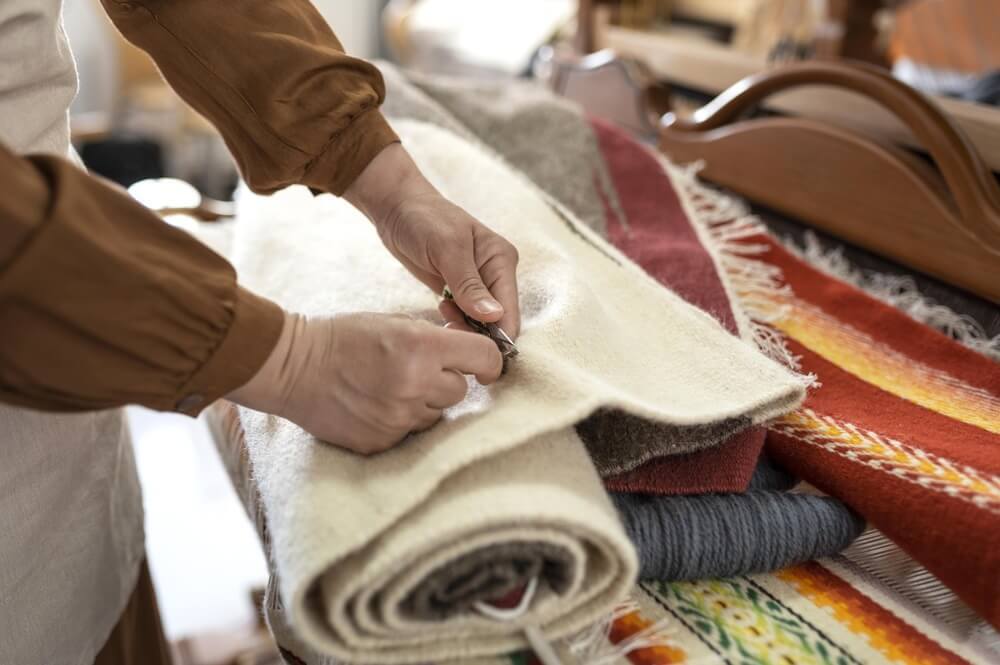Introduction
Welcome to the colorful and diverse world of fabrics! If you love crafting or decorating, knowing about different types of fabrics is like having a secret power. We'll help you pick the perfect material for any project, from furniture reupholstery to choosing the best fabric for curtains for your room.
Let's dive into this guide and unlock the secrets of fabric classification together!
Classifying The Types of Fabrics
Fabrics are the foundation of our house style, home decoration, and atmosphere. They can be further divided into natural ones, which include plant and animal substances, and synthetics, which are the result of human labor in combination with certain chemical processes.
Each fabric type offers particular characteristics, making them suitable for various home applications.
Natural Fabrics
Mother Nature has provided us with an array of materials that have been used for thousands of years to create different fabrics. Natural fabrics are treasured for their comfort, sustainability, and biodegradability. This makes them often used where comfort and breathability are quintessential.

Cotton Fabric
The most versatile and common use is natural fabric. Cotton curtains and bed linens are normally soft, breathable, and absorbent since the main product used to make them is cotton. At the same time, its ability to retain dyes has made it a favorite in furniture upholstery.
Silk Fabric
Silk, with its luxurious sheen and unrivaled softness, is often associated with elegance and luxury. This natural protein fiber is derived from the cocoons of mulberry silkworms and is valued for its smoothness and natural luster.
For these qualities, silk curtains, silk drapes, or even silk cushions are an elite choice for each house.
Wool Fabric
A fabric derived mainly from sheep that provides warmth even in the coldest winters. Wool is valued for its excellent insulating properties, so products such as wool curtains and blankets are great for creating a warm and cozy atmosphere on a cold evening.
Moreover, due to its wrinkle-free and high moisture-wicking properties, wool can be used for high-traffic carpets and upholstery.
Linen Fabric
Made from the flax plant, linen is one of the oldest known types of fabric. Linen curtains and draperies are often chosen for high-temperature areas, as they create a cool and fresh feeling in hot weather.
Anyway, linen's natural luster and ability to soften with each wash make it the best fabric for both casual and sophisticated home settings.
Synthetic Fabrics
The introduction of synthetic fabrics brought about revolutionary qualities like durability, elasticity, and resistance to shrinking and wrinkling, unmatched by their natural counterparts. These engineered fabrics meet specific home decoration needs, from water resistance to ease of maintenance.

Polyester Fabric
Polyester is a workhorse in the world of synthetic fabrics. This fabric's strength, durability, and low maintenance make it a mainstay in home furnishings, from stain-resistant upholstery to wrinkle-free polyester curtains. Quick-drying nature also makes it suitable for outdoor furniture covers and shower curtains.
Nylon Fabric
Nylon stands out for its exceptional strength and elasticity. This synthetic polymer is an excellent choice for resilient home décor items, durable area rugs, and heavy-duty nylon curtains. Its resistance to abrasion also ensures long-lasting use in high-traffic home areas.
Acrylic Fabric
Acrylic is mostly used as a more affordable alternative to wool, offering similar warmth and softness for much less. It's favored for throw blankets, decorative cushions, and other knit home accessories. Resistance to moths, oils, and chemicals adds to its appeal for everyday use.
Polypropylene Fabric
Polypropylene is known as a lightweight, water-resistant and durable fabric. Often used for indoor and outdoor upholstery and waterproof window treatments. Its resistance to water and stains makes it practical for kitchens, bathrooms, and outdoor living spaces.
By understanding these points, you can make informed choices that suit your specific needs.
Each fabric type brings its own unique set of qualities to the table, making the world of textiles rich and varied.
Comparison Table of Synthetic and Natural Fabrics
|
Aspect |
Natural Fabrics |
Synthetic Fabrics |
|
Benefits |
|
|
|
Downsides |
|
|
|
Use Cases |
|
|
Weaving Techniques
The technique of fabric craft defines the look and texture of not only the fabrics but also helps outline the area where they can be used across the various aspects of home decoration. Some of the common weaving techniques and their implications in regards to home furnishings are given below.
Woven Fabrics
Basically, woven fabrics are formed by the intersection of two sets of yarns running at right angles to each other, thereby giving a grid-like structure. These yarns are then intertwined to form a strong and often elaborate fabric, suitable for the widest range of home decor.

- Upholstery: woven textiles bring the durability required for sofas, chairs, and any other piece of furniture. Due to their tight weave, they can hold up to a large amount of wear and tear. By the way, at fabricmill.com, it's available in many types of fabric patterns and textures.
- Curtain fabric: tightly woven fabrics are suitable for both light-protective and blackout curtains. At the same time, lighter weaves are perfect for creating airy and light filtering curtains.
- Table Linens and Bedding: woven fabrics offer the ultimate comfort in terms of durability and ease of care. These features make them the best fabric for tablecloths, bedspreads, and duvet covers.
Knitted Fabrics
Knit fabrics result from an interloping system of loops of yarn and produce materials with a natural stretch and softness. Their flexibility and comfort make them the most applicable and appropriate for specific home decor uses:

- Throws and Blankets: the softness and stretch of knit fabrics are perfect for creating warm plaids and blankets that add real snugness to sitting or bedding areas.
- Cushion covers: knitted cushion covers add a cozy touch to any room. The added benefit is that, since they are stretchable, they can be spread over pillows of any size.
- Decorative Accents: small knitted items can play a unique decorative role. Things like poufs, rugs, or crocheted baskets will add coziness to any home.
Non-Woven Fabrics
Non-woven fabric is made by gluing or felting fabrics together, creating a canvas without weaving or knitting. This property gives a push to its aesthetic versatility for certain home décor uses:

- Wall Coverings: non-woven fabrics make durable, elegant wall coverings. They're widely used for wall coverings that may give the possibility of adding texture and depth to the walls in many applications without any need in painting or applying traditional wallpaper.
- Furniture covers: such fabrics are used quite often in upholstery and making covers for furniture. This is a cheap and very convenient option to refresh old furniture or protect new pieces.
- Craft and DIY Projects: the simplicity of cutting and shaping these fabrics deems them most appropriate for various craft projects. Everything from creating decorative elements to practical items like coasters and placemats.
Comparison Table of Weaving Techniques
|
Weaving Techniques |
Advantages |
Disadvantages |
Use Cases |
|
Woven Fabrics |
|
|
|
|
Knitted Fabrics |
|
|
|
|
Non-Woven Fabrics |
|
|
|
Choosing the Best Fabric For Home Decoration
|
Fabric |
Durability |
Care Tips |
Common Uses in Home Decoration |
|
Cotton |
Moderate |
Machine washable; prone to shrinking and fading with high heat |
Slipcovers, casual drapes, and soft furnishings |
|
Silk |
Delicate |
Dry clean or hand wash; sensitive to sunlight |
Luxurious drapes, cushions, and accents |
|
Wool |
High |
Spot clean or dry clean; pilling may occur with use |
Heavy-duty upholstery, warm throws, and rugs |
|
Linen |
Moderate to high |
Machine washable but can wrinkle and shrink; air dry recommended |
Light drapes, casual upholstery, and table linens |
|
Polyester |
Very high |
Easy care; machine washable and resistant to fading and shrinking |
Durable upholstery, curtains, and outdoor furniture fabrics |
|
Nylon |
High |
Machine washable; resilient but can fade with prolonged sun exposure |
Sturdy upholstery, heavy-duty curtains, and carpeting |
|
Acrylic |
Moderate to high |
Machine washable; prone to pilling and static |
Soft throws, cushions, and indoor/outdoor fabrics |
|
Polypropylene |
Very high |
Easy care; highly stain-resistant and can be cleaned with bleach |
Outdoor fabrics, rugs, and stain-resistant upholstery |
Summing-Up
Weaving techniques, along with the materials used, work in tandem for the sake of function, not just as a technical detail to present aesthetic appeal in home styling. From the strong weave of cotton and linen to the comforting loops of crocheted wool, each technique and material combination weaves its story and character into your living space.
A conscious fabric choice balances beauty with the demands of everyday life. It's all about creating spaces that reflect your taste and stand the test of time, ensuring your home is still a sanctuary of comfort and style and your projects are long living and do not deteriorate so fast.
Bottom Line
Looking for the perfect fabric for your next project? Fabricmill.com has got you covered! With a huge range of top-notch fabrics, we've got something for everyone's taste and every kind of project.
Whether you're giving an old piece a new life or starting something fresh, find all you need at Fabricmill.com.






